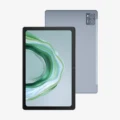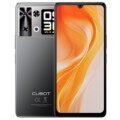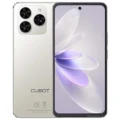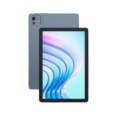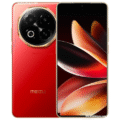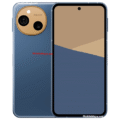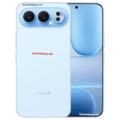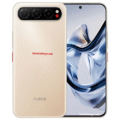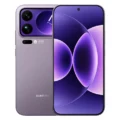Price List: Under Tk.5,000 | Tk.5001-10000 | Tk.10001-15000 | Tk.15001-20000 | Tk.20001-30000 | Tk.30001-40000 | More Mobiles
- Home
- All Mobile
- Cubot
- Cubot Note 40
Cubot Note 40
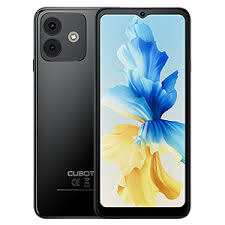


Specifications
Price in Bangladesh
| Expected Price | 12,000 |
General
| Device Type | Smartphone |
| Announced | October, 2025 |
| Released | October, 2025 |
| Status | Available |
Hardware & Software
| Operating System OS => Every computer system run on a base software called Operating System (OS). Operating System controls all basic operations of the computer (such as smartphone, PDAs, tablet computers and other handheld devices). The Operating System allows the user to install and run third party applications (apps), apps are used to add new functionality to the device. | Android |
| OS Version | v13 |
| Chipset Chipset is a group of integrated circuits designed to perform one or a more dedicated functions, often with real time computing constraints, Popular smartphones are equipped with more advanced embedded chipsets that can do many different tasks depending on their programming. | Unisoc T606 (12 nm) |
| CPU CPU (Central Processing Unit) mostly known as processors, CPU processes instructions in order to carry out certain functions that make your device operate properly. Processors are often described as the brain of computers, smartphones and tablets, Smartphones and tablets rely on processors to carry out their every task, Processors are an incredibly important factor in selecting any type of computing device, including your smartphone. | Octa-core (2x1.6 GHz Cortex-A75 & 6x1.6 GHz Cortex-A55) |
| GPU GPU (Graphics Processing Unit) is a single-chip processor designed to rapidly manipulate and alter memory to accelerate the creation of images in a frame buffer intended for output to a display, This includes things such as lighting effects, object transformations, and 3D motion. | Mali-G57 MP1 |
| RAM (Memory) RAM (Random Access Memory) is a type of computer memory that can be accessed randomly, any byte of memory can be accessed without touching the preceding bytes that allows information to be stored and accessed quickly from random locations. RAM is the most common type of memory found in computer systems, smartphones, tablets and other electronic devices. | 6 GB |
Design
| Dimensions | 165.8 x 75.8 x 10.1 mm (6.53 x 2.98 x 0.40 in) |
| Weight | 222 g (7.83 oz) |
| Colors |
Black, Purple, Green, Blue |
Display
| Display Type Display Technology => A number of display technologies and types used in mobile phones => TFT (Thin Film Transistor), IPS (In-Place Switching), OLED (Organic Light Emitting Diode), AMOLED (Active-Matrix Organic Light-Emitting Diode), Super AMOLED (an even advanced version of AMOLED), Resistive Touchscreen (Resistive touchscreens contain two layer of conductive material with a very small gap between them which acts as a resistance), Capacitive Touchsceen (Capacitive touchscreen technology consists of a layer of glass coated with a transparent conductor) | IPS LCD |
| Size | 6.56 inches, 103.4 cm2 (~82.3% screen-to-body ratio) |
| Resolution | 720 x 1612 pixels, 20:9 ratio (~269 ppi density) |
| Refresh Rate | 90Hz |
| HDR 10 / HDR+ support |
Rear Camera
| Camera Setup | Dual |
| Main Camera | 50 MP |
| Second Camera | 2 MP |
| OIS | |
| Video | 1080p@30fps |
Front Camera
| Camera Setup | Single |
| Secondary |
8 MP |
| Video | Yes |
Battery
| Battery Type Battery Type => Cell phones run on various kinds of batteries depending on the manufacturer, phone size or shape and features. There are basically four types of cell phone batteries => Lithium Polymer, Lithium Ion, Nickel Metal Hydride and Nickel Cadmium. | Li-Ion (Lithium Ion) |
| Placement | Non-removable |
| Capacity Battery Capacity is a measure (typically in Amp-hr) of the charge stored by the battery, and is determined by the mass of active material contained in the battery. The battery capacity represents the maximum amount of energy that can be extracted from the battery under certain conditions. | 5200 mAh |
| Quick Charging | 10W wired |
Storage
| Storage Capacity | 256 GB |
| USB OTG |
Network
| 2G Network |
GSM 850 / 900 / 1800 / 1900 |
| 3G Network |
HSDPA 850 / 900 / 1700(AWS) / 1900 / 2100 |
| 4G Network |
1, 2, 3, 4, 5, 7, 8, 12, 17, 20, 28, 41 |
| SIM SIM (Subscriber Identity Module) is a small card that contains mobile network subscriber's account information. This allows the phone using the card to attach to a mobile network. The SIM card is most commonly associated with GSM and UMTS mobile networks. Moving a SIM card from one phone to another allows a subscriber to switch mobile phones without having to contact their mobile network carrier. SIM cards can also be used by a phone to store limited amounts of data, such as phone numbers and text messages. | Standard SIM |
Data
| GPRS GPRS (General Packet Radio Service) is a packet oriented mobile data service on the 2G and 3G cellular communication system's global system for mobile communications (GSM), Generally, GPRS is used for the purpose of wireless data transfer, such as sharing pictures and videos or browsing the Internet via a mobile phone connection. | |
| EDGE EDGE (Enhanced Data GSM Environment) is a wireless network technology generally considered the next step in the 2G network offers data transfer rates up to four times faster than ordinary GSM networks, Generally, EDGE is used for the purpose of wireless data transfer, such as sharing pictures and videos or browsing the Internet via a mobile phone connection. | |
| Speed | HSPA, LTE |
| Web Browser Web Browser => a web browser is a software application used to locate, retrieve and display content on the World Wide Web, including Web pages, images, video and other files, The primary function of a web browser is to render HTML, the code used to design or markup webpages. | HTML5 |
Messaging
| SMS SMS (Short Messaging Service) is a text messaging service component of phone, Web, or mobile communication systems. It uses standardized communications protocols to allow mobile phone devices to exchange short text messages over the networks. | Yes |
| MMS MMS (Multimedia Messaging Service) is a standard way to send messages that include multimedia content (audio clips, video clips and images) to and from mobile phones over wireless networks using the WAP protocol. | |
| Email Email (Electronic Mail) is a system for receiving, sending, and storing electronic messages, Similar to a letter, email is text messages that may contain files, images, or other attachments sent via the internet to a recipient by using applications and software prograps. An email address is required to receive email, and that address is unique to the user. | Yes |
| IM IM (Instant Messaging) is an exchange of text messages through a software application, it enable you to create a kind of private chat room with another individual in order to communicate in real time over the Internet. | Yes |
Connectivity
| Bluetooth Bluetooth is a wireless communications technology for exchanging data between mobile phones, headsets, computers and other network devices over short distances without wires, Bluetooth technology was primarily designed to support simple wireless networking of personal consumer devices. | 5.0, A2DP, LE |
| Wi-fi Hotspot | |
| Infrared Infrared connectivity is an old wireless technology used to connect two electronic devices. It uses a beam of infrared light to transmit information and so requires direct line of sight and operates only at close range. | |
| USB | USB Type-C, OTG |
| GPS GPS The Global Positioning System is a satellite-based radio navigation system, GPS permits users to determine their position, velocity and the time 24 hours a day, in all weather, anywhere in the world, In order to locate your position, your device or GPS receiver must have a clear view of the sky. | GPS, GLONASS, GALILEO, BDS |
| NFC NFC (Near field communication) is a set of standards for smartphones and similar devices to establish peer-to-peer radio communications with each other by touching them together or bringing them into proximity, usually no more than a few inches. |
Media
| FM Radio | No |
| Alert Types | Vibration, MP3, WAV ringtones |
| Loudspeaker | Yes |
| 3.5mm Jack | No |
Sensors & Security
| Fingerprint Sensor |
More
| Made By | China |
Performance Tests
Cubot Note 40 Price in Bangladesh
The Cubot Note 40 is priced at ৳12,000 in Bangladesh for its 6GB RAM and 256GB storage variant, offering impressive value in the budget smartphone segment.
Launched in October 2025, the Cubot Note 40 brings together a well-rounded package with a 90Hz display, a 50MP dual rear camera, and a large 5200mAh battery. Powered by a Unisoc T606 chipset and running on Android 13, this device is tailored for users looking for a reliable smartphone experience without spending a fortune.
Positioned firmly in the budget category, the Cubot Note 40 stands out for its generous storage capacity and smooth display refresh rate — features rarely seen in phones at this price point.
Cubot Note 40 Specifications
Display and Design
The Cubot Note 40 features a 6.56-inch IPS LCD display with a resolution of 720 x 1612 pixels and a 20:9 aspect ratio, delivering sharp visuals with a pixel density of around 269 ppi. A key highlight is its 90Hz refresh rate, which ensures smoother scrolling and a better overall viewing experience compared to standard 60Hz displays.
In terms of design, the phone boasts a modern look with a screen-to-body ratio of ~82.3%, giving users ample display real estate. It measures 165.8 x 75.8 x 10.1 mm and weighs 222 grams, providing a solid and sturdy feel in hand. Available in Black, Purple, Green, and Blue, it appeals to a variety of style preferences.
Performance and Processor
Under the hood, the Cubot Note 40 is powered by the Unisoc T606 chipset (12nm), featuring an octa-core CPU (2×1.6 GHz Cortex-A75 and 6×1.6 GHz Cortex-A55) and Mali-G57 MP1 GPU. This combination delivers decent performance for everyday tasks, such as social media, browsing, streaming, and even light gaming.
The phone includes 6GB of RAM and a generous 256GB of internal storage, which is expandable via USB OTG, giving users ample room for apps, media, and files. Whether you’re multitasking or using heavier apps, the Cubot Note 40 manages to keep things running smoothly within its segment.
Camera and Video
The Cubot Note 40 sports a dual-camera setup on the back, led by a 50MP primary sensor, accompanied by a 2MP secondary camera for depth sensing. While optical image stabilization (OIS) is not included, the phone supports 1080p video recording at 30fps, suitable for capturing high-quality videos in good lighting.
On the front, it houses an 8MP selfie camera, perfect for video calls and social media snaps. Although it doesn’t include advanced camera modes like night vision or AI portrait enhancement, it still delivers crisp and vibrant photos in daylight conditions.
Battery and Charging
Battery life is one of the strengths of the Cubot Note 40. It comes with a non-removable 5200mAh Li-Ion battery, which provides all-day power with ease. The device supports 10W wired charging, which may not be the fastest, but is acceptable considering the price range.
Thanks to the efficiency of the Unisoc T606 chipset and Android 13 optimizations, users can expect reliable battery performance for regular daily usage, including video streaming and gaming.
Connectivity and 5G Support
The Cubot Note 40 supports 2G, 3G, and 4G LTE networks, with a wide array of supported bands including Band 1, 2, 3, 4, 5, 7, 8, 12, 17, 20, 28, and 41. Although 5G is not supported, it delivers strong 4G performance across most Bangladeshi networks.
The phone is equipped with dual SIM slots, Bluetooth 5.0, dual-band Wi-Fi, GPS, GLONASS, GALILEO, and BDS navigation systems. It uses a USB Type-C port and supports USB OTG, enabling you to connect flash drives and other peripherals with ease.
Additional Features
The Cubot Note 40 runs on Android 13, offering a clean and modern user experience. It features a side-mounted fingerprint sensor for added security, alongside standard sensors like an accelerometer and proximity sensor.
However, it lacks FM Radio, stereo speakers, and a 3.5mm headphone jack, which might be a drawback for some users. Still, its solid software experience and essential features make it a practical choice for budget-conscious buyers.
Reason to Buy
Here are a few standout reasons to consider the Cubot Note 40:
- Affordable Price with premium-like features
- Large 256GB Storage ideal for heavy media users
- Smooth 90Hz Display for better visuals and scrolling
- Powerful 50MP Rear Camera for detailed photography
- Massive 5200mAh Battery ensures long-lasting use
- Modern Design with Multiple Color Options
- USB Type-C and OTG Support for better connectivity
Verdict
The Cubot Note 40 is a compelling option for users looking for a feature-rich smartphone on a budget. With its high-resolution camera, generous storage, and smooth display, it competes well against more expensive models in the market.
While it lacks 5G support and fast charging, it makes up for it with dependable performance and a sleek, modern design. Perfect for students, casual users, and anyone who wants excellent value for money.
FAQ
Q1: What is the price of Cubot Note 40 in Bangladesh?
A: The Cubot Note 40 is priced at ৳12,000 for the 6GB RAM and 256GB storage variant.
Q2: Does the Cubot Note 40 support 5G?
A: No, the Cubot Note 40 supports up to 4G LTE networks.
Q3: Is the battery removable?
A: No, it comes with a non-removable 5200mAh battery.
Q4: Can I expand the storage?
A: The phone supports USB OTG, allowing you to connect external storage devices, though there’s no microSD card slot mentioned.
Q5: Does it have a fingerprint sensor?
A: Yes, it includes a side-mounted fingerprint sensor for added security.
Q6: What version of Android does it run?
A: It runs on Android 13, providing the latest features and security updates.
Q7: Is there a headphone jack?
A: No, the Cubot Note 40 does not include a 3.5mm headphone jack.
User Reviews
Disclaimer Note
We do not guarantee that the information of this page is 100% accurate and up to date.


